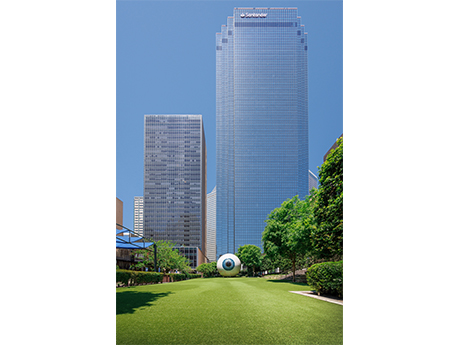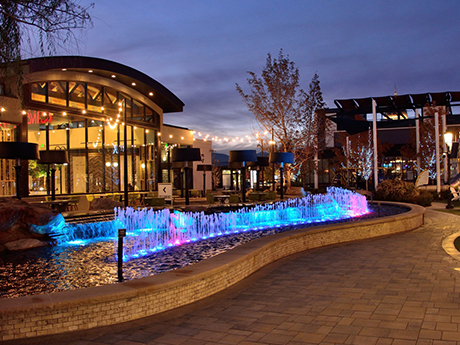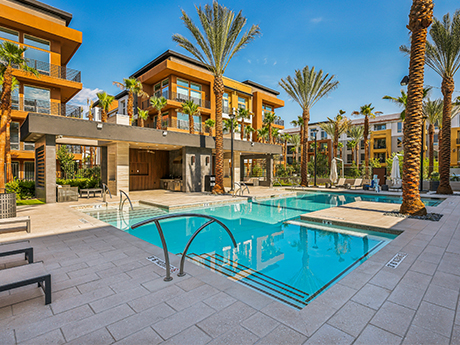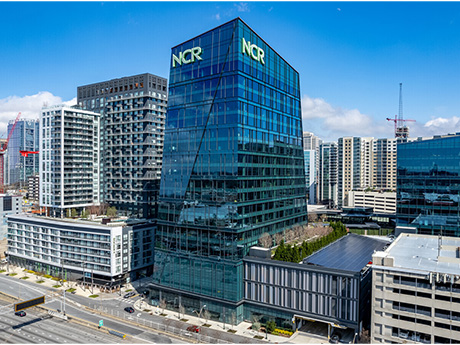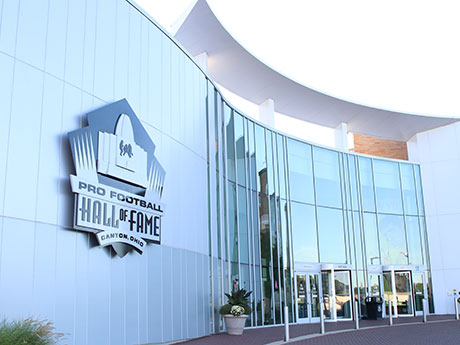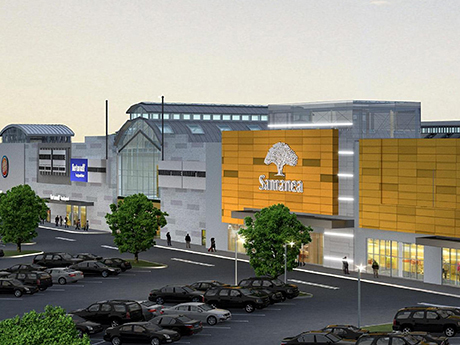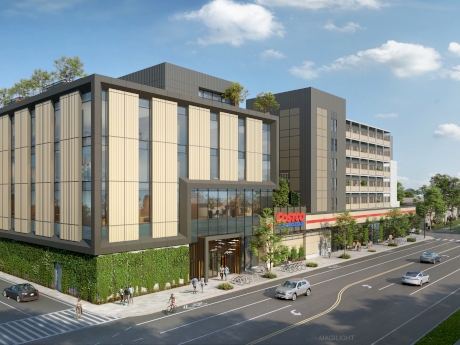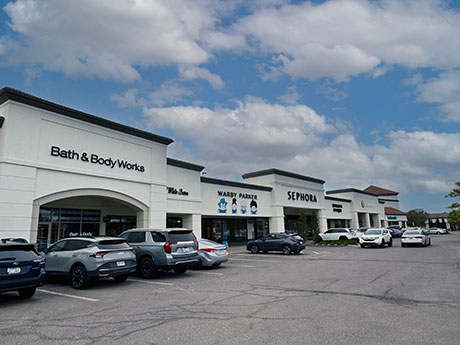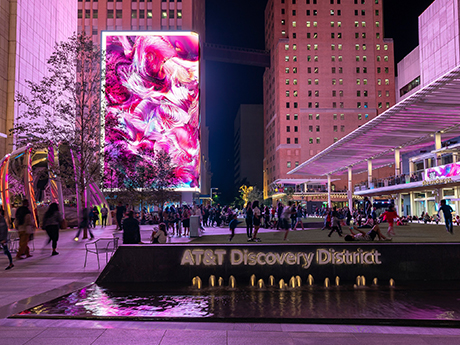By Nate Wilkins, associate at Munsch Hardt Kopf & Harr PC Office conversions represent one of the hottest real estate plays in the country, and Texas is undoubtedly a hotspot for those projects. According to D Magazine, in Dallas and Houston combined, there is more than 10 million square feet of vacant office space that is currently being transformed or is slated for conversion. A majority of these projects are mixed-use, meaning that office tenants will eventually be occupying the same building as residential tenants. Therefore, there are several key factors that office tenants and their landlords must consider when signing or renewing leases in the conversion projects, including utilization of common areas, use of utilities and parking allotments. What follows are some strategies for navigating office conversions as they become more prevalent in Texas over the next several years. Common Areas In a typical mixed-use property in which retail space is on the ground floor with multifamily above, landlords are prone to include lease language that states “Tenant shall have no right to use the elevator lobbies, apartment floors and any other areas designated by landlord exclusively for residential occupants.” While standard, this language becomes troublesome when the only …
Market Reports
By Wick Zimmerman, CEO of Outside the Lines Inc. In the Northeast’s evolving commercial real estate landscape, mall owners and operators are navigating now-familiar headwinds: changing consumer behaviors, declining legacy retail brands and the sustained presence of e-commerce . Yet amid these pressures, a reinvention is underway. Malls are shedding their images as static retail venues and transforming into immersive, tech-enabled destinations — and it’s not traditional retail driving the charge. It’s Gen Z, a digitally native, experience-driven cohort that’s redefining what mall real estate can and should be. This shift presents both a challenge and an opportunity for regional retail stakeholders. The challenge? Retrofitting aging assets to meet evolving demands. The opportunity? Creating diversified, high-traffic destinations that outperform their square footages in terms of both revenue and relevance. From Shopping Centers to Engagement Anchors Once emblematic of suburban retail, malls across the Northeast — from Long Island to greater Boston — are increasingly being reimagined as hybridized spaces that combine shopping, entertainment and community programming. In densely populated, high-barrier markets, where new development is constrained, adaptive reuse initiatives are driving the charge. Class B and C malls, in particular, are being repositioned with new anchors — not department stores, but …
— By Adam Schmitt of CBRE — The Las Vegas multifamily market is experiencing a significant transformation that’s shaped by new construction trends and evolving market dynamics. As the city continues to expand and adapt, it is essential for current investors, developers and capital allocators to understand the opportunities and barriers for growth. The multifamily market has seen substantial fluctuations since the onset of COVID-19. Rents surged by 24.6 percent in 2021, buoyed by government interventions. However, as these supports diminished, vacancy rates rose sharply, climbing from an average of 3.4 percent in 2021 to 7.35 percent in 2023. Recent trends, however, indicate a recovery. Vacancy rates have decreased to 6.5 percent as of February, which hint that multifamily fundamentals may be regaining stability and moving toward normalized averages. The single-family housing market is another critical element influencing the overall health of Las Vegas’ economy. The market produced 160,092 single-family homes between 2003 and 2008. However, only 142,455 were built between 2009 and 2024. This slowdown has led to soaring home prices, even amid rising mortgage rates approaching 7 percent. Consequently, the growing disparity between renting and owning has created favorable conditions for rental housing demand, further solidifying the multifamily …
Tenants are battling it out for Atlanta’s top-tier office space as trophy availability tightens and new office construction draws to a halt. With no end to the flight-to-quality trend in sight, Class B assets accounted for a whopping 70 percent of the market’s overall negative absorption (-736,682 square feet total net) in the first quarter of 2025, while Trophy assets recorded positive absorption (+114,579 square feet). Furthermore, office buildings that delivered between 2016 and 2021, which amount to almost 14 million square feet of space, currently average 92 percent occupancy. This underscores the growing divide between the haves and have-nots in Atlanta’s office market. Premium space in demand As office leasing activity reaches its highest level since 2019, decision-makers face a rapidly evolving landscape where securing the right space requires a highly motivated and strategic approach. With rising attendance mandates, workforce expansion and a limited supply of premium office space, competition for the best locations is intensifying. In Atlanta, submarkets like Midtown and Central Perimeter continue to outperform. Mini submarkets surrounding mixed-use districts like Avalon and The Battery (i.e. “urban-edge” in the suburbs) are also in high demand among tenants craving walkability and upscale amenities in the metro’s most sought-after …
By Ethan Elser, PACE Equity In today’s turbulent commercial real estate landscape, developers and property owners face challenges to secure sufficient competitively priced capital. High interest rates, compressed valuations and a low leverage lending environment have complicated funding strategies and eroded traditional capital stack assumptions. More and more, property owners and developers are turning to Commercial Property Assessed Clean Energy (C-PACE) financing due to its core attributes: low cost, nonrecourse, long-term and fixed-rate capital. With amortization periods of up to 30 years, owners and developers recognize that C-PACE terms are virtually unmatched in the private debt markets. As an assessment tied to the property rather than the borrower, C-PACE funding is being leveraged more than ever to support creative solutions in today’s marketplace. C-PACE has evolved into a dynamic financial tool used across the lifecycle of a building — from new construction to recapitalizations to retrofits. C-PACE is used by savvy commercial real estate professionals to optimize their capital structure and boost their internal rate of return (IRR). Identifying the financial utility of C-PACE in a shifting market C-PACE is growing in popularity as an alternative to mezzanine debt, preferred equity and other high-cost financing. In today’s environment, C-PACE is …
By Taylor Williams The retail markets throughout the greater New York City area have been starving for more quality space in the post-pandemic era, with ground-up supply gains rarely hitting the market outside of obligatory inclusions within apartment buildings and highly curated clusters at mixed-use developments. According to JLL’s latest market report on New York City, as of the first quarter of 2025, there were approximately 200 availabilities across Manhattan’s “prime” retail submarkets — a record low. Average asking rents leapt 7.4 percent between the fourth quarter of 2024 and the ensuing period, settling at a rate of $577 per square foot. The report identified traditionally ritzy retail corridors and hotspots such as Fifth Avenue, Madison Avenue, SoHo and Times Square as recipients of the “prime” label, also designating the Williamsburg district in Brooklyn as one such area. So when well-located spaces formerly occupied by retailers that are now defunct or aggressively downsizing become available, they tend to draw major, immediate interest. “Expanding retailers have substantial opportunities to backfill big box and junior spaces vacated by bankrupt chains,” says Mitzi Flexer, managing director in the New York City office of national brokerage firm Bradford Allen. Flexer says that a notable …
— By Kalli Knight of Colliers — The Los Angeles multifamily market faces several headwinds, including rising expenses, the aftermath of recent fires, insurance exclusions and Measure ULA. These factors impact transaction volumes, leading many investors to remain on the sidelines. However, Southern California and Los Angeles will continue to have strong fundamentals, attracting a unique pool of buyers. This includes qualified, high-net-worth family offices eager to take advantage of limited competition to acquire new construction at prices below replacement costs or favorable debt terms. Management companies are increasingly critical in supporting property stabilization post-pandemic, with a growing urgency to enhance operations and increase net operating income. As construction loans mature, their impact on property stabilization is significant. Though the concession rate of 0.7 percent is significantly less than the national concession rate of 1.1 percent, many developers now offer four to six weeks of concessions to lease properties and meet projected rents outlined in their financial analyses. Some developers have also opted for creative strategies, such as providing customized closets to attract renters at higher luxury price points instead of relying solely on weekly concessions. Vacancy rates in the market vary, but have generally improved since 2024. They have …
The last four quarters in the Atlanta industrial market were something akin to a good old-fashioned roller coaster ride at the historic Southeastern Fairgrounds! The absorption, activity and new construction sectors all went for a somewhat bumpy ride this past year. What’s happening? First, the quarterly absorption numbers for the Atlanta industrial market have been anything but steady. Eight quarters ago there was 7.9 million square feet of positive net absorption, followed by five negative quarters in a row (totaling 13.2 million square feet), then came two positive quarters (totaling 7 million square feet) and then back down to 2.8 million square feet of negative net absorption for the first quarter of 2025. The annual absorption numbers were up and down as well. The last four quarters yielded 2.2 million square feet of positive net absorption, but a year ago, at this same time, the absorption numbers plummeted down to a negative 11.3 million square feet. Two years ago, the industrial market experienced 32.5 million square feet of positive net absorption. Second, the activity numbers also were up and down. The second quarter of 2024 recorded 14.4 million square feet of activity, but that number dropped to 13.6 million …
By Joshua Turner, Landmark Commercial Real Estate The commercial real estate market in Wichita and South Central Kansas has shown remarkable resilience and growth in recent years. Following the challenges of the pandemic, the region has not only recovered but is now thriving. Wichita’s central location and business-friendly environment have long attracted investments in retail, office, industrial and mixed-use developments. Prior to the pandemic, low vacancy rates and steady rent growth indicated a strong and promising market. While retail and office spaces experienced temporary setbacks due to shifting work and consumer habits, the industrial sector remained active, fueled by e-commerce demand. The region’s lower costs and pro-business climate helped it weather economic fluctuations better than many larger metro areas. Since 2021, Wichita’s commercial real estate market has experienced an impressive resurgence. The industrial sector is booming, driven by manufacturing, logistics and distribution expansion. Retail has adapted to evolving consumer preferences, with experiential and mixed-use developments gaining popularity. Office spaces are being reimagined to accommodate hybrid work models, offering flexible solutions that meet modern business needs. Wichita’s population has steadily grown over the past decade, reflecting the city’s increasing economic opportunities and high quality of life. Currently home to nearly 400,000 …
By Taylor Williams Sometimes you just have to keep it real. In the world of mixed-use retail, featuring a blend of shops, restaurants and entertainment venues that is both unique in its totality and true to its surrounding market on individual levels is crucial to placemaking. As a concept, placemaking is somewhat difficult to define on paper but fairly easy to identify in the moment — the undeniable sense that the combination of what you are buying, eating, drinking and experiencing is simply not replicable anywhere else. Placemaking is, ironically, an idea that is very difficult to quantify, yet is intrinsically worth every dollar spent on design, construction and marketing — and then some. A longtime developer of mixed-use properties in Dallas once told this writer that the idea of bringing together a critical mass of residential, office and hospitality uses within one site — threaded and connected by retail, restaurants, green spaces and walkable infrastructure — is only novel to American consumers. Europeans have lived, worked and played that way for decades. And thanks to rolling swaths of land, surging population growth, rapidly evolving public infrastructure and the good-ole pro-business mindset, Texas has positioned itself as a leader in …


